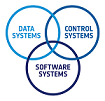Speaker
Description
In the context of Space Situational Awareness (SSA), on-board detection of space weather events – such as solar flares or Coronal Mass Ejections (CME) – can decrease the system latency for critical information reaching the end-users. Unfortunately, such detection requires complex on-board image analysis not commonly deployed on institutional missions, due to lack of high-performance space qualified processors and available qualified software tools. However, in recent years there has been an increasing use of on-board machine learning inference in NewSpace missions – such as the achievements of the inclusion of an AI-accelerator processor on-board Phisat-1, allowing an increase in on-board autonomy.
In this work, we have developed and optimized two machine learning applications based on ANN (Artificial Neural Networks) targeting Space Weather applications: on-board CME detection and detection of radiation upsets in optical imagers for on-board radiation scrubbing. The CME detection algorithm was initially trained and provided by University di Torino, which was later retrained at ESTEC and adapted for candidate hardware targets.
In addition, we have evaluated several commercial flows for training optimising and deploying ML models in embedded systems. Deep learning applications for space can be deployed on Commercial off-the-shelf (COTS), radiation-hardened by design (RHBD) and radiation-tolerant (RT) devices, for which especially the two latter are important to consider for future institutional missions.
The presentation shows the deployment of the two applications on several targets, including several FPGAs from Xilinx using the Vitis AI development flow: Zynq 7000, Zynq UltraScale+ (ARM A53 processors), Kintex Ultrascale and Versal AI. Furthermore, the Unibap ix5 computer was targeted, both AMD CPU and GPU as well as Myriad X was tested. The deployment towards the processors have been done using TensorFlow Lite (TFLite). As part of an In-Orbit Demonstration (IOD,) the model versions adopted for the ix5 computer are currently flying on-board the Wild Ride mission.
In addition, we have evaluated TensorFlow Lite Micro (TFLite Micro) to be used for LEON4/SPARC processors. Several patches to the TFLite Micro code base was necessary. The code has been tested on the GR740 rad-hard processor – which is qualified for use on ESA institutional missions.
The presentation demonstrates the enhancements towards an optimized neural network and the deployment with different tool chains. It ends with an overview of the lessons learned during deployment and highlights important future steps – to allow deployment of deep learning on institutional missions.

